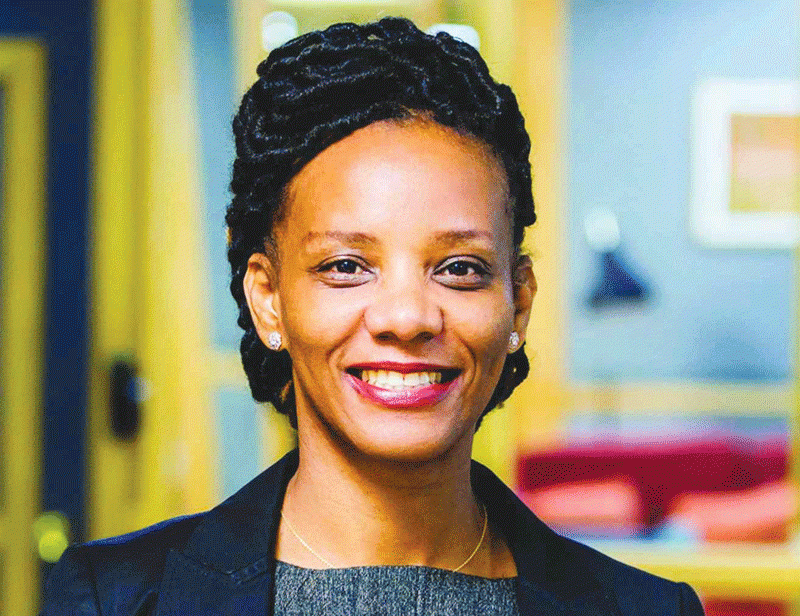
VICTOR Hugo is the French poet and novelist credited with the phrase “Nothing is more powerful than an idea whose time has come”. Ideas whose time have come are unstoppable.
As we deny and reject the innovations, the world will continue to move ahead, utilising the historical innovations and necessities, with us lagging behind and no one will pay attention as we dawdle behind. We can shout from rooftops that new innovations like Starlink are national security threats, but it is the creators and innovators that will not only continue to rule the world, but chow the lunch of those sleeping on the job.
As we embark upon the path towards an artificial intelligence (AI)-infused future like Starlink, these new innovations can only be first understood, then embraced and ultimately utilised for our very own national development.
Philosophical underpinnings of AI
The field of AI, although born from the brilliance of modern computation, finds its roots in timeless philosophical contemplations.
René Descartes, in his Meditations, delved into the nature of cognition, implicitly hinting at a realm where machines could potentially emulate human thought processes. Even as far back as 1651, Thomas Hobbes, in Leviathan, proclaimed that “…reasoning is but reckoning”, reinforcing the notion that logical computation, even if mechanised, lies at the core of intelligence.
I first got to know about AI 38 years ago when I embarked on the second year of doing my Masters in Business Administration, in a course, Advanced Forecasting Techniques, that was fascinating, to say the least. Even as far back as 1986, it was inconceivable that AI would have as many applications as it now has today.
The evolution of AI
- Public relations: How artificial intelligence is changing the face of PR
- Queen Lozikeyi singer preaches peace
- Public relations: How artificial intelligence is changing the face of PR
- Business opinion: Branding through Artificial Intelligence
Keep Reading
Alan Turing, the visionary behind modern computing, posed the fundamental query: “Can machines think?” in his seminal work, Computing Machinery and Intelligence (Turing, 1950).
His hypothesis, famously known as the Turing Test, established a benchmark for machine intelligence — if a human evaluator cannot distinguish between a machine and a human based solely on their responses to questions, then the machine can be deemed to possess “thought”.
Since Turing’s era, AI has traversed a remarkable path, progressing from rule-based systems in the 1960s and 70s, to expert systems in the 1980s, and the emergence of neural networks in the 1990s.
The 21st century marked the advent of deep learning, where algorithms, inspired by the intricate neural architecture of the human brain, exhibited astonishing prowess in tasks, such as image and speech recognition (LeCun, Bengio, & Hinton, 2015).
The ethical dilemmas of AI
The rapid advancement of AI capabilities has raised profound ethical concerns. Matters pertaining to bias in AI, the right to explanation, and the potential displacement of jobs necessitate thoughtful deliberation (Bostrom, 2014).
For instance, should a self-driving car prioritises the safety of its passengers or pedestrians?
Moreover, AI and machine learning models, despite their remarkable accuracy, can sometimes function as enigmatic “black boxes”.
This lack of transparency can impede comprehension and troubleshooting, underscoring the necessity for transparent and interpretable models (Doshi-Velez & Kim, 2017).
Socio-economic ramifications of AI
Beyond the realms of technology and ethics, AI carries unprecedented socio-economic implications. Brynjolfsson and McAfee (2014) in their work The Second Machine Age highlight the transformative impact of AI on industries, economies and the nature of work.
While AI offers potential for enhanced efficiency, concerns regarding the phenomenon of “technological unemployment”, where machines may replace human jobs, persist. Already this is happening in many industries across the world.
Quest for AGI
The quest for artificial general intelligence (AGI) epitomises a breed of AI that possesses the remarkable ability to undertake any intellectual endeavour human beings can effortlessly accomplish (Russell & Norvig, 2009).
While our present-day models exhibit remarkable proficiency within limited domains, the realisation of AGI necessitates the creation of systems imbued with the faculties of learning, reasoning, and the application of knowledge across multifarious fields, thus marking the zenith of artificial cognitive capacity.
Traversing the intricate realm of artificial intelligence unfurls a tapestry woven with threads of ground-breaking innovation, intricate ethical dilemmas, and profound socio-economic metamorphoses.
As humanity stands upon the precipice of unparalleled technological advancements, a symbiotic alliance with sentient machines beckons, commanding both circumspection and audacious exploration.
Interplay between dreams, reality
For countless centuries, humanity has been enthralled by the concept of creating artificial entities that mirror the complexities of human intellect.
This timeless aspiration, evident in ancient myths featuring automatons like Talos and the Jewish Golem, has now materialised into the realm of algorithms and machines that emulate cognitive functions akin to humans (McCorduck, 2004).
Early explorations into automatons
The annals of artificial intelligence are deeply ingrained in the annals of history, where trailblazers like Al-Jazari meticulously crafted intricate automata during the 12th century. Although these contrivances lacked genuine cognition, they laid the groundwork for the eventual emergence of mechanised intelligence (Hill, 1998).
The transition
The odyssey from mechanical contraptions to the conceptualisation of intelligence commenced with visionaries like Ada Lovelace, who envisioned a future where Charles Babbage’s Analytical Engine could produce art and music, foreshadowing the multifaceted capabilities of modern AI (Lovelace, 1843).
Formalisation
Alan Turing’s theoretical groundwork, exemplified by the Turing Test and the Universal Turing Machine, became a pivotal milestone for machine intelligence (Turing, 1950).
His work ignited a quest to explore whether logical computations could pave the way for a new era of intelligent machines.
Emergence of machine learning
Rosenblatt’s introduction of the perceptron in 1958 marked the dawn of machine learning (Rosenblatt, 1958). The potential to train machines using data rather than hard-coded rules was revolutionary.
This heralded the birth of neural networks, a concept inspired by biological neural structures.
However, it was not until the development of the back propagation algorithm in the 1980s that deep learning took its nascent steps (Rumelhart, Hinton & Williams, 1986).
The renaissance of AI
The confluence of vast data sets, powerful computational capabilities, and refined algorithms in the 21st century ignited a resurgence in AI research. Deep learning models, fortified by layers of artificial neurons, exhibited prowess in areas such as natural language processing, image recognition, and even creative endeavours like art generation (Goodfellow, Bengio, Courville, 2016).
GPT, AlphaGo and beyond: The accomplishments of modern AI models like Open AI’s GPT and DeepMind’s AlphaGo not only demonstrate computational finesse, but also a capacity for nuanced, human-like learning and strategic thinking (Silver et al, 2017; Brown et al, 2020).
Epilogue: The future awaits: Gazing towards the horizon, the convergence of AI with quantum computing and the pursuit of AGI promises a frontier where machines may equal, or even surpass, the breadth and depth of human cognitive abilities (Sutor, 2019).
Navigating labyrinth of AI lexicon: AI, in its vast expanse, is strewn with intricate terminologies, each concealing a wealth of knowledge. For scholars and practitioners alike, manoeuvring through these terms is crucial for a comprehensive understanding of the domain (Russell & Norvig, 2009).
- Ndoro-Mukombachoto is a former academic and banker. She has consulted widely in strategy, entrepreneurship, and private sector development for organisations in Zimbabwe, the sub-region and overseas. As a writer and entrepreneur with interests in property, hospitality and manufacturing, she continues in strategy consulting, also sharing through her podcast @HeartfeltwithGloria. — +263 772 236 341.











